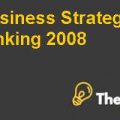TOPIC: The Role of Leaders on Motivating Project Teams for Successful Projects Within an Organization. Case Study Help
Introduction
Motivation, as outlined by Routledge & CRC Press. (2019) stands as the fundamental driving force within individuals, showcasing variations in behavior intensity and strongly linked to enhanced work performance, increasing employee productivity. Although money is a significant motivator in the workplace, its significance fluctuates based on individual circumstances and work satisfaction levels.
Thus, motivation has been a historical concern and now holds an essential role in contemporary organizational contexts. (Nguyen, T. M., Nham, T. P., Froese, F. J., & Malik, A. (2019)). The intricate nature of motivation acknowledges a multitude of factors influencing employee performance within a specific organization, where motivational triggers differ from person to person.
Although it is ideal to have a team that is internally motivated, (Gunawan, N. P. I. N., Hariyati, R. T. S., & Gayatri, D. (2019), this can be difficult to achieve. Rewards and recognition are examples of extrinsic factors that are vital to business success, sustainable growth, and the emotional bond between leaders and employees within the organization. (Ali Ababneh, O. M., Awwad, A. S., & Abu-Haija, A. (2021). But strong leaders know how to use motivational techniques to build a strong team within an organization and show that they have a deep awareness of each person's needs. Vision, values, and passion are the cornerstones of effective leadership, which fosters a workforce that takes initiative.
Exploring the impact of leaders on Motivating Project Teams for Successful Projects within an Organization
Motivation serves as a driving force propelling leaders and team members towards the achievement of various activities related to work and organizational goals.( Acquah, A., Nsiah, T. K., Antie, E. N. A., & Otoo, B. (2021). Its complexity lies in its intrinsic motivating power, subject to external factors. Its complexity stems from its inherent ability to inspire, influenced by external factors. Leaders must discern the process of motivating individuals and align it with workplace needs. An understanding of team members' motivations is pivotal for creating a positive and conducive work environment that guides employees towards motivation.
A group of individuals who collaborate to accomplish a set of objectives for a particular project is called a project team. The majority of project teams are cross-functional, which means that members come from various departments or groups within the company. It is a crucial aspect within organizations, and certain essential elements serve as catalysts to boost motivation. Policies like clear goals, active participation, employees’ encouragement, celebrating success, fostering accountability, effective communication, and a leadership role contribute to team building and enhance employee motivation.
Motivating project teams increases performance (Graygroupintl 2019).. Research suggests that empowering employees enhances motivation, Mustafa, L. (2021). and even in the absence of empowerment, effective leadership qualities can inspire employees. Motivated individuals find satisfaction in their work and deliver exceptional performance compared to those who are less motivated. Every effective leader aspires to have their organizations filled with individuals who possess this mindset, making it a crucial consideration for leadership.
Also, a team with members who share a common purpose, view their tasks as challenging, foster a powerful sense of companionship, take responsibility for organizational outcomes, and experience knowledge growth both a team and individually will tend to maintain motivated over a long haul...........
order on the website to order your own originally done case solution."}" data-sheets-userformat="{"2":513,"3":{"1":0},"12":0}">This is just a sample partial case solution. Please place the order on the website to order your own originally done case solution.












